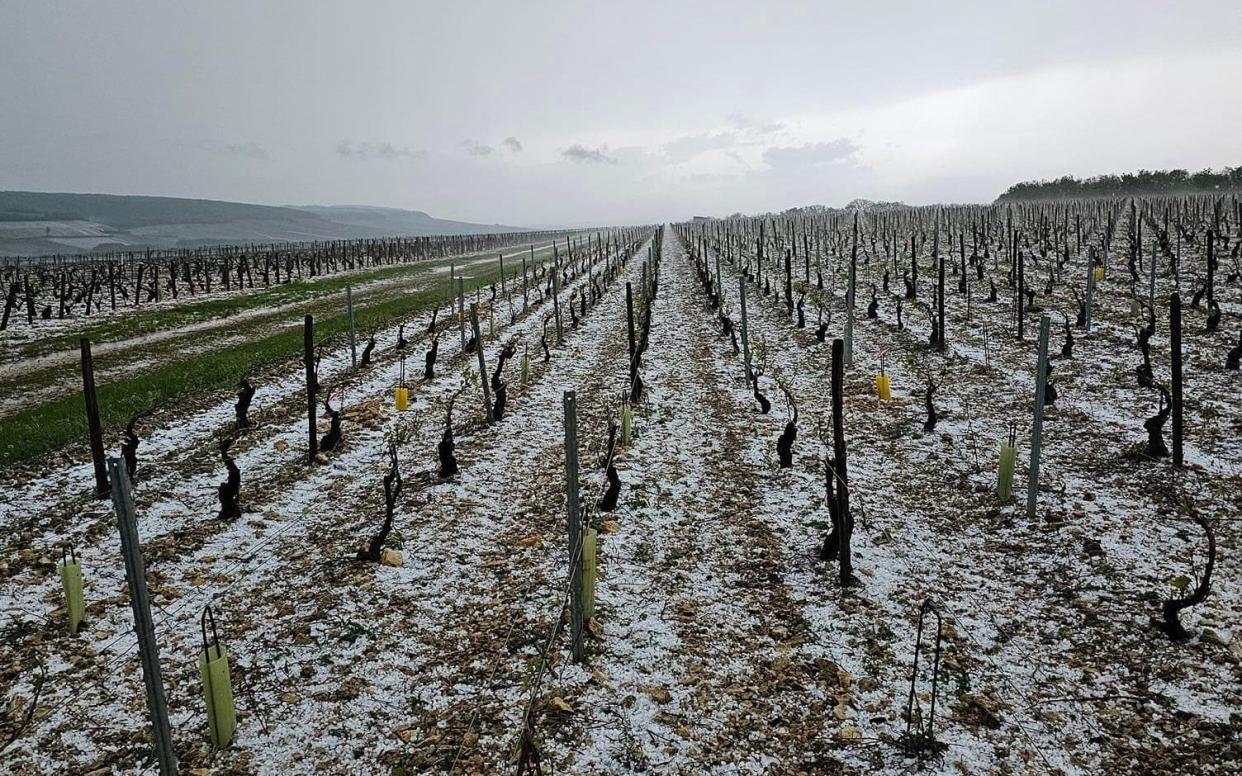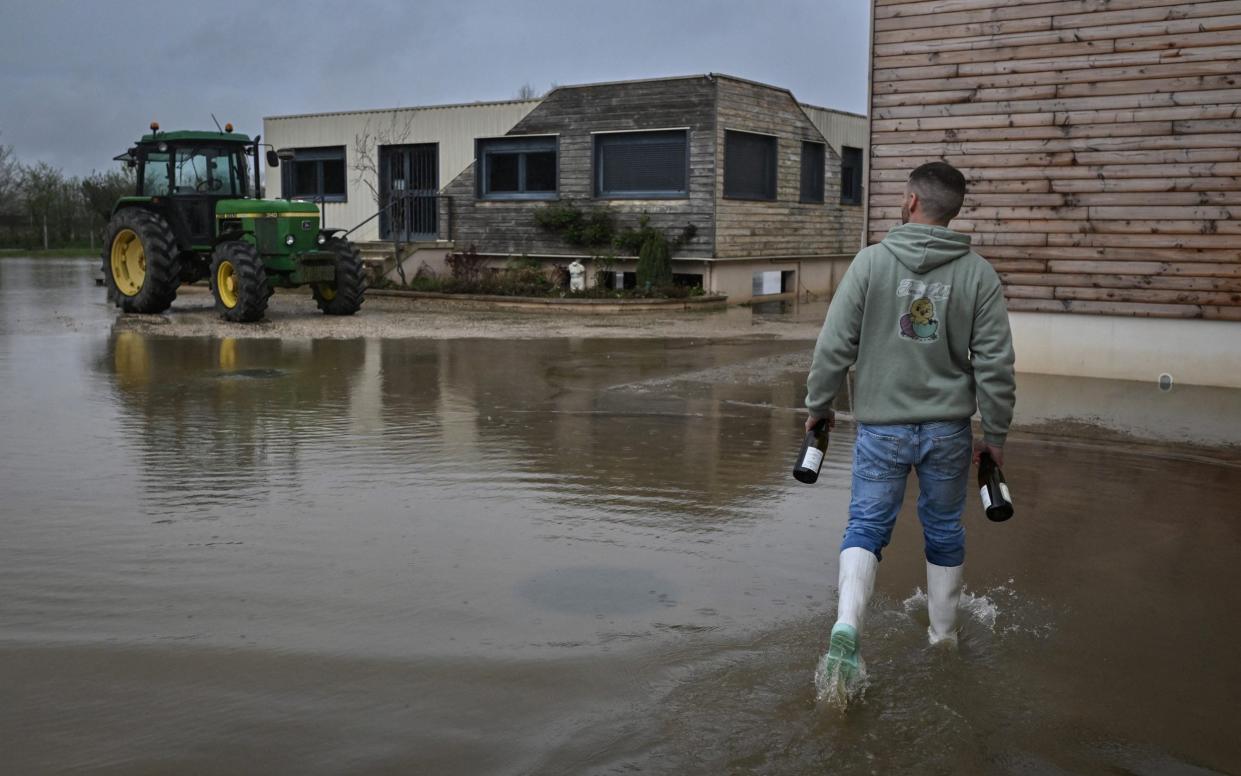Hail storm wipes out Chablis vineyards

A “supercell” hail storm has wiped out vast swathes of Chablis vineyards in Burgundy in a devastating blow to the internationally renowned wine region.
The storm that struck north-central France overnight caused “pétanque boule-sized” hailstones to rain down on the town of Chablis and surrounding vineyards, according to Météo-France.
At least one person was killed by a mudslide, buildings suffered extensive damage, and flights to Paris were disrupted.
The full extent of the damage caused to the Chablis vineyards remains unclear but winemakers reported widespread destruction.
“The hail tore everything apart. It devastated a good part of the whole vineyard,” said Arnaud Nahan, co-owner of Domaine du Chardonnay in Chablis, estimating that “in some places, we’ve lost 100 per cent [of vines]”.
“It’s a disaster this year,” he told AFP, adding that alarm bells had already rung over flooding at Easter which submerged his land on the banks of the Serein river. Last week, they also had to contend with frost.
“The damage was quite extensive in some villages,” said Frédéric Gueguen, vice-president of the Chablis producers association.
“The shoots on the vines are still young and therefore fragile,” he added. “There won’t be much Chablis this year.”

Producers activated anti-hail cannons, designed to limit the growth of hailstones as they form and thus limit the damage on the ground. But the system apparently failed to prevent extensive damage in the face of a storm of this size.
Sébastien Dauvissat, a Chablis winegrower with 11 hectares of vines, producing 40,000 to 50,000 bottles of wine each year, said: “In some areas, I think that if the vines are hit head-on by the wind and the hailstones, we’re going to reach 70-80 per cent of vines destroyed.”
The next harvests “risk being compromised”, he warned. “The appellation, the profession, the people who work in the vines – everyone will be affected,” he told RTL.
“We already know that the 2024 harvest is over,” winegrower Daniel Etienne Defaix wrote on Facebook, sharing photos and videos of the streets of Chablis in the Yonne department under rain and hail.
“You can’t see the grass, you can’t see the roads. It’s as if we were in the mountains with ten centimetres of snow,” he said.
Weather forecaster Météo89 warned on Wednesday that several supercell systems – a type of rotating thunderstorm – were circulating in the region simultaneously, heralding a major storm.
Major storms
Françoise Roure, head of the Burgundy wine board, said that hail has the effect of “chopping up leaves, causing the leaves and future bunches” of grapes to fall off.
But she said it was still “too early to say” just how bad the damage is.
Wine grower Nathalie Fèvre said all the plots she had visited had been largely destroyed. Yet the season had looked promising. “Miraculously, we weren’t too badly affected by the frosts. We had protected the vines with candles and heating wires.”
But then the region sustained more than 3,400 lightning strikes.
“The anti-hail system was set up, but it wasn’t effective. We use iodide generators, which target the clouds to make the hail smaller. Now we’re going to get out a big box of tissues and we’re going to cry... Nature has taken charge.”
The ruinous hailstorm came as global wine production reached a historic low in 2023 and climate change could be to blame, according to a major report published last week.
The International Organisation of Vine and Wine (OIV) says wine production hit its lowest level since 1962. This intergovernmental organisation has 50 member states, representing 75 per cent of the world’s vineyard area.
Experts blamed “extreme environmental conditions” including droughts and fires that have been driving the downward trend in production. Though climate change is not entirely to blame, the OIV says, these conditions are the greatest challenge the industry is facing.
In the EU, wine production declined by 10 per cent in 2023 – the second-lowest recorded volume of wine since the beginning of the century.
The drop in production comes alongside news that wine consumption is at its lowest level since 1996 because of price increases from inflation and a sharp drop in wine drinking in China due to economic slowdown.
